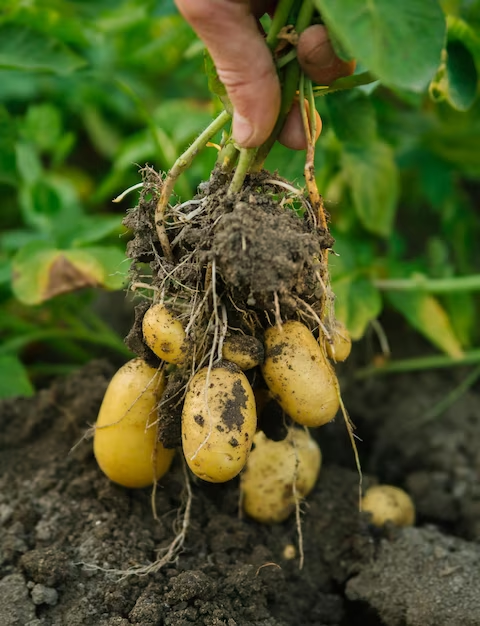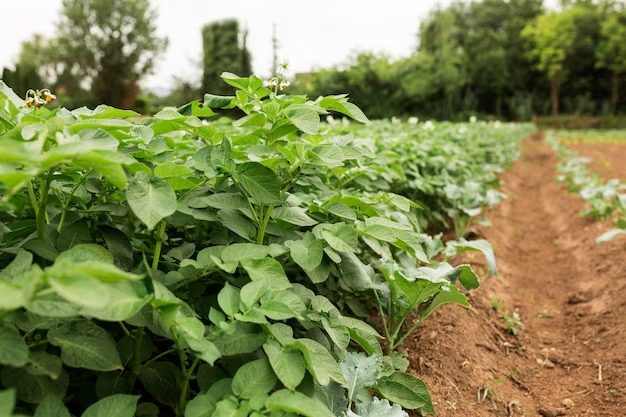Can you eat the potatoes from a potato vine plant?
What is a Potato Vine Plant?
A potato vine plant is a tropical plant that belongs to the morning glory family. It is a popular ornamental plant, known for its attractive foliage and colorful flowers. Potato vine plants are native to Central and South America and are often grown as a source of ornamental beauty or as a source of edible tubers.

The leaves of a potato vine plant are heart-shaped and can vary in color from light green to deep purple. The plant produces attractive, trumpet-shaped flowers that come in shades of purple, pink, and white. In addition to being ornamental, the potato vine plant is also a valuable source of food.
There are several varieties of potato vine plants, with some being more edible than others. The most commonly grown edible varieties include sweet potato vines, which produce tuberous roots that are rich in dietary fiber and vitamins. Other edible varieties of potato vine plants produce edible leaves that can be used in salads or cooked as a vegetable.
In conclusion, the potato vine plant is a beautiful and versatile tropical plant that can be used as a source of ornamental beauty or as a source of food. With proper care and attention, the potato vine plant can thrive in both sunny and dark locations, making it a great choice for any garden.
Can You Eat the Potatoes from a Potato Vine Plant?
Potatoes are a popular and versatile vegetable that can be prepared in a variety of ways. While most potatoes are grown specifically for their edible tubers, some potato vine plants also produce potatoes as a byproduct of their ornamental beauty. But can you actually eat potatoes from a potato vine plant?
The short answer is that it depends on the variety of potato vine plant. Some potato vine plants, such as sweet potato vines, produce edible tubers that are rich in dietary fiber and vitamins. These edible sweet potatoes can be used in recipes just like regular potatoes, and they are a popular ingredient in many cuisines around the world.
In conclusion, while not all potato vine plants produce edible tubers, sweet potato vines are a great choice for those looking to grow and eat their own potatoes. Just be sure to properly identify the variety of potato vine plant, and take care when harvesting and storing the tubers to ensure their safety and enjoyability.
Types of Potato Vines
Potato vines are a diverse group of plants that come in many different varieties. Some varieties are grown for their ornamental foliage, while others are grown for their edible tubers or leaves. Here are some of the most common types of potato vines:
1. Sweet potato vines: Sweet potato vines are perhaps the most well-known type of potato vine. They are prized for their edible tubers, which are low in calories and high in fiber and nutrients. Sweet potato vines are also popular for their attractive foliage, which comes in a range of colors and shapes.
2. Regular potatoes: Regular potatoes, like those you find in the grocery store, also produce vines that are edible. However, these vines are not typically grown for their tubers, but rather for their leaves. Potato leaves are rich in nutrients and can be used in a variety of dishes, from salads to soups.
3. Ornamental potato vines: Ornamental potato vines are grown primarily for their attractive foliage, which comes in a range of colors and shapes. These vines are often used as a decorative plant in container gardens or as a groundcover. Some popular varieties of ornamental potato vines include the “Blackie” and “Marguerite” varieties.

4. Potatoes for seed: Potatoes for seed are a type of potato vine that is grown not for its tubers or leaves, but for its ability to produce seed potatoes. Seed potatoes are small, disease-free potatoes that are used to grow new potato plants. Potato vines grown for seed are typically disease-resistant and produce a high yield of seed potatoes.
5. Toxic potato vines: While most potato vines are safe to eat, there are a few varieties that can be toxic if ingested. For example, the potato vine plant contains solanine, a compound that can cause adverse effects such as nausea, vomiting, and dilated pupils. It is important to properly identify the variety of potato vine plant before consuming any part of it.
In conclusion, potato vines come in a variety of types, each with its own unique characteristics and uses. Whether you are looking for an edible tuber, nutritious leaf, or attractive foliage, there is a potato vine out there for you.
Edible Varieties
Potato vines can be found in a range of edible varieties, making them a versatile and nutritious addition to any vegetable garden. Sweet potato greens, for example, are a popular choice for those looking to incorporate more leafy greens into their diet. These greens are rich in nutrients and have a sharp flavor that pairs well with a variety of dishes.
For those looking to enjoy the tubers of potato vines, there are a variety of edible options to choose from. Sweet potato tubers are perhaps the most well-known, as they are a source of fiber and can be prepared in a variety of ways, from baked to mashed. Other edible tubers include those of ornamental potato vine varieties, which can be less starchy and sweeter than their sweet potato counterparts.
Whether grown for their attractive foliage or their nutritious tubers and leaves, edible potato vine varieties are a great addition to any vegetable garden. With proper care and cultivation, these plants can provide a source of fresh, nutritious produce for years to come.
Ornamental Varieties
Ornamental potato vines can not only add a touch of color to your garden but also provide edible tubers that are perfect for snacking or cooking. These varieties are known for their attractive foliage, which comes in a range of colors, such as green, purple, and even black. Some ornamental potato vines also produce potato fruits or flowers that add a unique touch to their appearance.
One of the most popular ornamental varieties is the sweet potato vine plant, which is often grown for its sweet and delicate leaves. Sweet potato greens can be consumed cooked or raw and are a great source of nutrients, such as vitamin C and beta-carotene. The tubers of sweet potato vine plants are also edible and can be roasted, mashed, or baked to create delicious and healthy sweet potato dishes.
Another ornamental variety to look out for is the purple potato vine, which produces deep purple leaves and tubers. These tubers are known for their sharp flavor and are often used in traditional dishes in South America. They are also a great source of fiber and nutrients, such as potassium and vitamin C.
Growing Requirements for Potato Vines
Potato vines, both sweet and regular varieties, are easy to grow and maintain, making them a great addition to any vegetable garden or container garden. These members of the morning glory family require specific growing conditions to thrive and produce healthy and edible potatoes.
Firstly, potato vines prefer a sunny spot with at least six hours of direct sunlight per day. In colder climates, it is best to start planting potato vines in early spring because they require warm temperatures to germinate and grow. The soil temperature should be above 50°F for optimal growth.
Potato vines require well-draining soil with a pH level between 5.0 and 6.0. Adding compost and organic matter to the soil before planting can improve soil drainage and fertility. Regular fertilization can also help promote healthy growth.

Potato vines require consistent moisture levels to produce healthy and edible potatoes. However, too much water can cause the tubers to rot. The soil should be kept moist but not soggy, and the vines should be watered regularly, especially during hot and dry weather.
In conclusion, growing and maintaining potato vines requires specific growing conditions such as warm temperatures, well-draining soil, consistent moisture levels, and regular fertilization. By providing the optimal growing conditions, gardeners can enjoy a bountiful harvest of healthy and delicious potatoes.